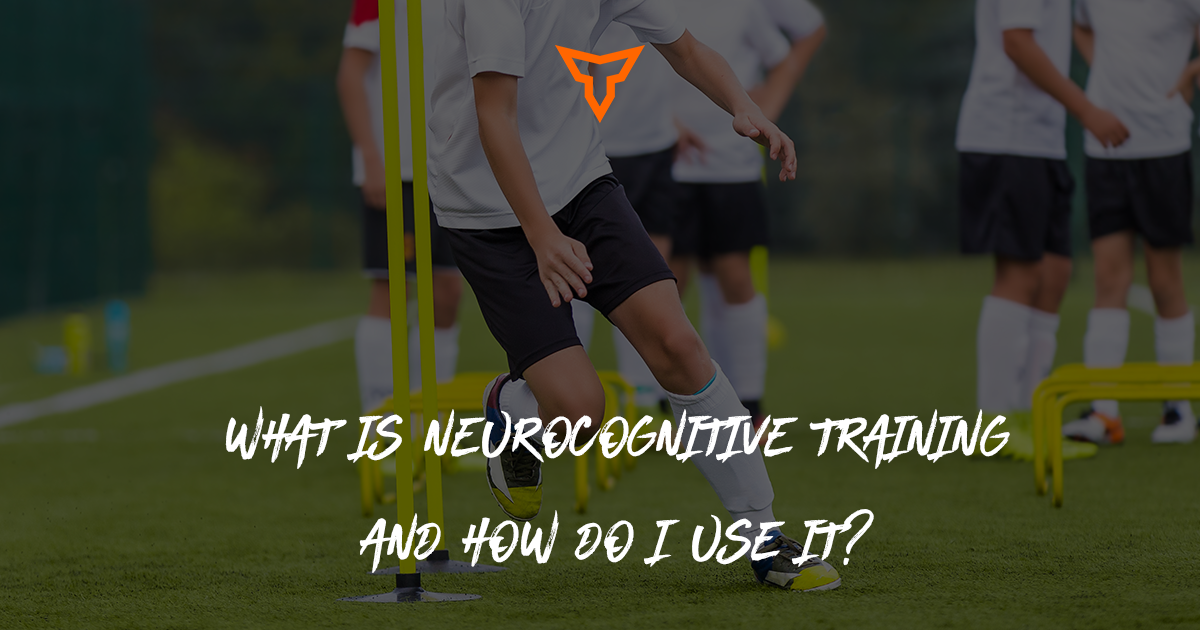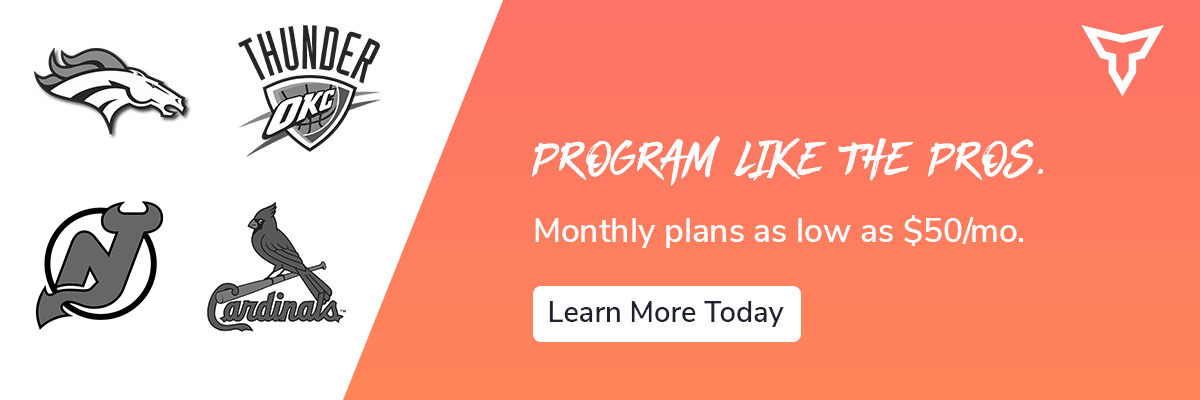The COVID-19 pandemic has put the entire world into a whirlwind. With many tragedies and lives affected over the past 3-months, it seems like we are finally starting to see the light at the end of this very dark tunnel.
The lives we all lived before are now going to be forever altered. The new “normal” will set in soon, and part of that is going to be the return to sports. For athletes, this is going to be a critical process that could be career altering for better or worse. My goal is to take this complex scenario of going from global pandemic to competitive play, and turn it into a very simple analogy to work with.
Load vs. Capacity
This phrase has been around for years. So long, that I don’t even know who to credit for introducing me to the concept. Let’s break down a few things in this analogy.
Capacity is an athlete's ability to do work. Think of capacity as a cup. Load is the work an athlete does. Think of load as water. When an athlete performs work, it puts water in the cup. When an athlete recovers, it pours water out of the cup. The goal is to not let the cup overflow with water. When you overflow the cup, the water spills everywhere and those are your symptoms, injuries and complications.
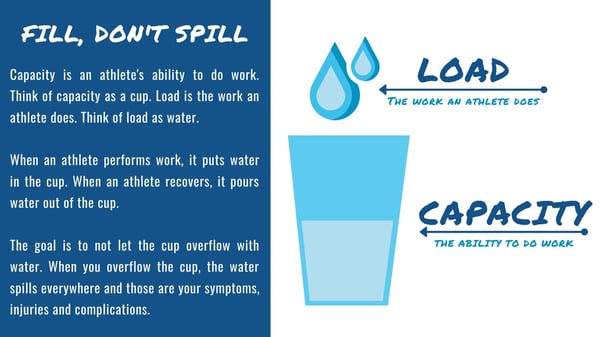
Is it really that simple? Kind of. Sure, there are thousands of variables and factors that make it unique to each athlete, but for the most part I think this analogy checks all the major boxes.
COVID Capacity
Depending on where you are in the world, athletes may have been quarantined for at least 8-10 weeks. Or maybe even currently still in quarantine. As a result, this strips athletes of their normal training environments or their ability to train at all. Gyms are closed. Parks are closed. Tracks are closed. Team activities are shut down. The list goes on and on. This also adds an immense amount of mental & emotional stress to their plates as well.
As training decreases and stress increases, our athletes are going to lose some of their work capacity. Maybe they worked out daily. Maybe they didn’t get off the couch for 2 months. Either way, their work capacity is reduced at some level.
A big misconception I’ve seen throughout this pandemic is that people are mistaking activity for achievement. A highly developed athlete is going to usually need some higher stimuli in their training to get the adaptation they’re aiming for and unless they have the equipment to do that at home, a home workout is likely activity not achievement.
If I’m a 405 bench presser, no amount of push-ups I do at home on Zoom is really going to move the needle for me in terms of strength adaptation. I can, however, focus on sprint technique, mobility improvements and other ways to increase capacity.
How to Increase Capacity
Due to the quarantine many of our athlete’s capacity went from an 8 ounce glass to maybe something like a shot glass. It’s smaller and easier to overflow. How do we get that big cup back under such odd circumstances?
Of course, exercise will help. But we did cover some of the challenges with that, especially with higher level athletes. The stimulus won’t be available. Training-wise, a few things that you could do are sprinting and plyo work. At least that will keep the stimulus high and actually pay dividends in the long run. 10 burpees EMOM for 10 minutes ain’t cutting it.
Another no-brainer is diet.
Don’t eat like I did the night I found out my gym would be closed by the government indefinitely. Although pizza, wings and ice cream is good for the soul…
Okay, but seriously, athletes could fine tune their nutrition during this downtime. Lock in the macro and micronutrients. Encourage athletes to take into account the things that may be lacking, in general, and also due to COVID-19. Vitamin C seems like a great idea here. Elderberry. Get some increased Vitamin D intake to make up for the indoor isolation. Keep hydration on point. It doesn’t have to be a diet plan calculated down to the calorie, just make some logical decisions.
Lastly, the least sexy of them all… sleep. To quote my friend and athletic trainer, Mitch Gill, most athletes aren’t overtrained, they’re under-recovered. Sleep is so underrated, still. It seems like coaches always talk about how awesome sleep is and the message still doesn’t get through at the level that it should.
By doing what you can in training, making smart dietary choices and getting adequate sleep, you can turn your shot glass into a cup. Or your cup into a pitcher. Or maybe your pitcher into a bucket. Elevate your capacity and your workload won’t pose as an issue.
How to Safely Load
Now for the fun stuff! The load. The water that fills up our cup. What to do? Even if you’re reading this in May and have done nothing since March, it’s not too late.
I love the Arthur Ashe quote, “Start where you are. Use what you have. Do what you can.” It’s perfect. Athletes who have remained pretty sedentary over this quarantine may want to just start with simple isometric holds in various positions. Athletes who have remained active might be able to get more plyo and sprint work in because they haven’t lost as much work capacity.
As coaches, we can point athletes in the right direction using a continuum model that may look something like this. This is obviously very general, but can get athletes moving towards the end goal.
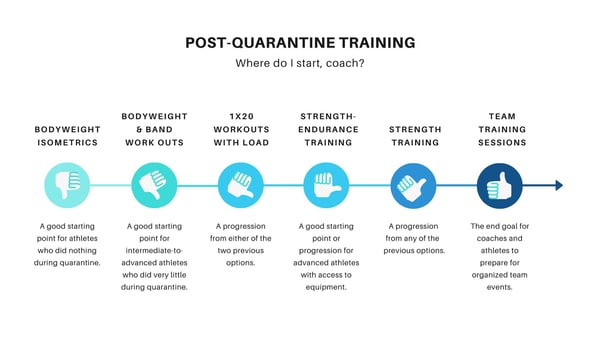
Putting It All Together
At the end of the day, I love the “crock pot” approach. Low and slow. No need to “deep fry” anything right now for the instant results.
I think allowing athletes to slowly ease back into training and return to sports is going to be great for our athletes’ health long term. I also think it slows the rush down and could potentially push seasons, tournaments and events back, which is also great for the health and immunity of our country.
All in all, this is just a really simplified way to look at a complex scenario. If we can get back to the basics and make this a fun process for our athletes, that will do wonders for them on and off the court/field.
Subscribe to our blog
Subscribe to receive the latest blog posts to your inbox every week.
Related posts
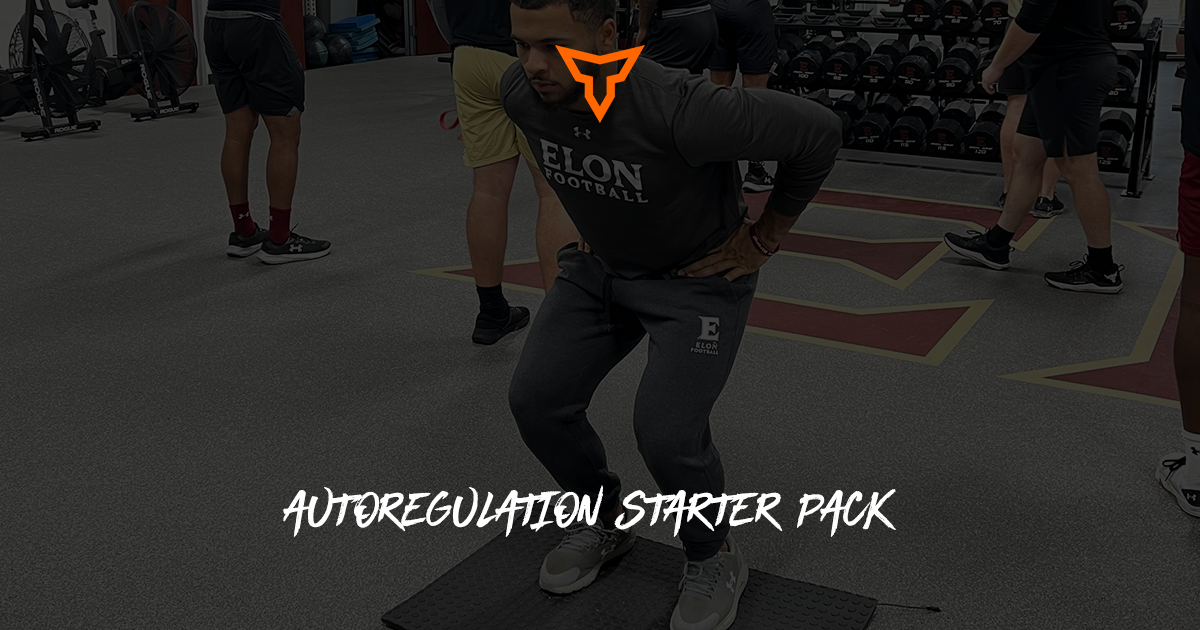
Autoregulation Starter Pack

How Important is "Sleep Quality" to Your Program's Performance?
